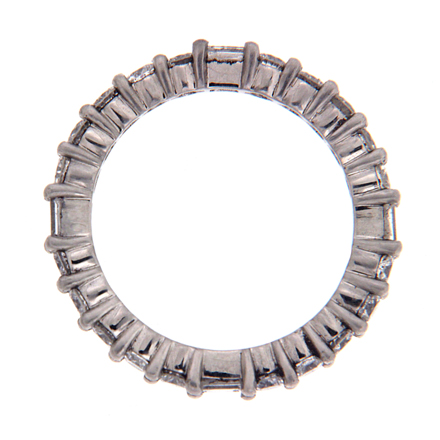Prongs are portions of a ring which hold diamonds in place. They’re often made of thin bands which rise from the shank and bend at the tips to secure the jewel. Many settings for diamond engagement rings and wedding bands use a variation on prongs. They serve both practical and decorative purposes.
 Popular designer engagement rings use a four or six prong mount. These types have been worn for over a century. Aside from their classic look, they allow extra light to travel through the jewel. This in turn increases brilliance. The four to six prong look is compatible with many diamond shapes, including round, marquise, square and more.
Popular designer engagement rings use a four or six prong mount. These types have been worn for over a century. Aside from their classic look, they allow extra light to travel through the jewel. This in turn increases brilliance. The four to six prong look is compatible with many diamond shapes, including round, marquise, square and more.
Cathedral mounts are a variation on the basic prong set. The diamonds on a cathedral ring sit higher above the shank. Next to the jewel, the band curves upwards to touch the diamond’s sides. Cathedrals serve as a platform to better display the diamonds in a ring.
Common prongs are when two diamonds are secured by the same wires. They appear on diamond eternity bands, three stone rings, and other designs. When there are a number of jewels, too many prongs may take away from the diamonds’ appearance. Common prongs serve as a discrete setting.
Bead settings are used with the tiniest jewels. Rather than a full prong, artisans carve burrs from the shank and use them to mount gems. As with common prongs, beads keep diamonds in place without overshadowing them. Pave wedding bands and similar rings feature beads or similar prongs.





